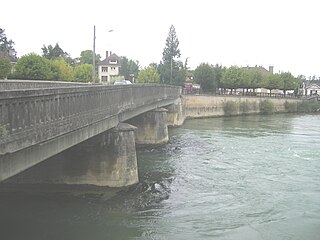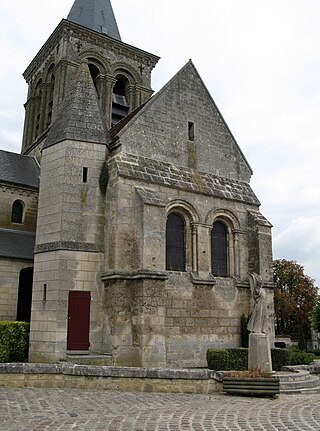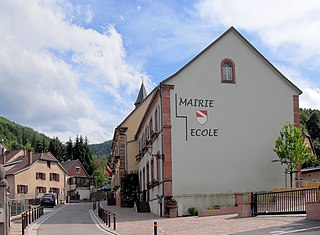
Arcis-sur-Aube is a commune in the Aube department in the Grand Est region of north-central France.

The Vesle is the river on which the city of Reims stands. It is a fourth order river of France and a left-bank tributary of the Aisne. It is 139.4 km (86.6 mi) long, and rises in the département of Marne through which it flows for most of its course.

Bavay is a commune in the Nord department in the Hauts-de-France region of northern France. The town was the seat of the former canton of Bavay.

The Arrondissement of Reims is an arrondissement of France in the Marne department, Grand Est. It has 143 communes. Its population is 294,674 (2016), and its area is 1,432.4 km2 (553.1 sq mi).

Ablon-sur-Seine is a commune in the Val-de-Marne department in the southeastern suburbs of Paris, France. It is located 15.3 km (9.5 mi) from the centre of Paris.

Autry is a commune in the Ardennes department in the Grand Est region of north-eastern France.

Asfeld is a commune in the Ardennes department in the Grand Est region of north-eastern France, formerly named Ecry or Ecri.

La Balme-les-Grottes is a commune in the Isère department in the Auvergne-Rhône-Alpes region of south-eastern France.

Aizy-Jouy is a commune in the department of Aisne in the Hauts-de-France region of northern France.

Augy is a commune in the department of Aisne in the Hauts-de-France region of northern France.

Aubenton is a commune in the department of Aisne in the Hauts-de-France region of northern France.

Barzy-en-Thiérache is a commune in the department of Aisne in the Hauts-de-France region of northern France.

Bazoches-sur-Vesles is a former commune in the department of Aisne in the Hauts-de-France region of northern France. On 1 January 2022, it was merged into the new commune of Bazoches-et-Saint-Thibaut.

Acy is a commune in the department of Aisne in the Hauts-de-France region of northern France.

Barembach is a commune in the Bas-Rhin department in the Grand Est region of north-eastern France.

Ambarès-et-Lagrave is a commune in the Gironde department in the Nouvelle-Aquitaine region of southwestern France.

Bussy-le-Château is a commune in the Marne department in the Grand Est region of Northeastern France.

The Battle of Fismes and Fismette was a battle in Fismes, France that took place during the First World War from 3 August to 1 September 1918 during the end of the Second Battle of the Ourcq and the Aisne-Marne Offensive.
The canton of Fismes-Montagne de Reims is an administrative division of the Marne department, northeastern France. It was created at the French canton reorganisation which came into effect in March 2015. Its seat is in Fismes.

The Communauté urbaine du Grand Reims is the communauté urbaine, an intercommunal structure, centred on the city of Reims. It is located in the Marne department, in the Grand Est region, northeastern France. It was created on 1 January 2017 by the merger of the previous communauté d'agglomération Reims Métropole with the communautés de communes Beine-Bourgogne, Champagne Vesle, Nord Champenois, Fismes Ardre et Vesle, Vallée de la Suippe, Rives de la Suippe, Vesle et Coteaux de la Montagne de Reims and 18 other communes. Its area is 1432.4 km2. Its population was 295,926 in 2018, of which 182,211 lived in Reims proper.

































